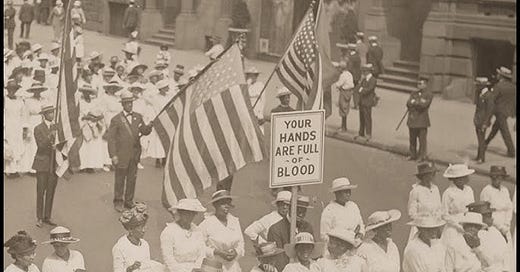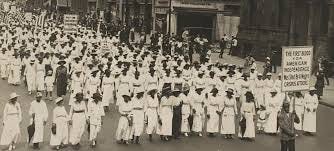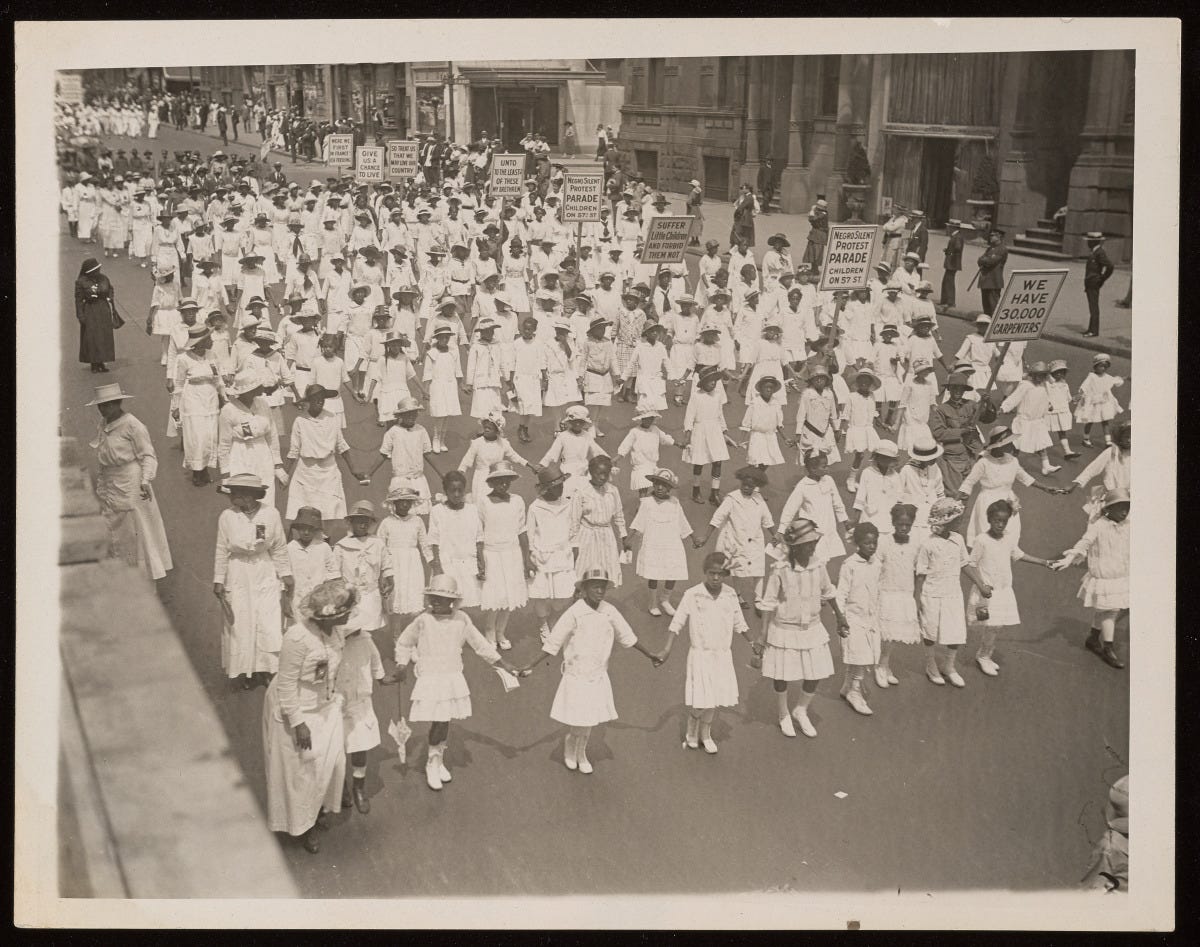The Silent Parade (1917) – A March for Justice That Echoes Today
Black History from the Lens of Liberation
On July 28, 1917, in the sweltering heat of a New York summer, nearly 10,000 Black men, women, and children marched silently down Fifth Avenue. Dressed in white, carrying banners demanding justice, they walked in complete silence. No chants, no slogans—just the sound of their footsteps.
This was The Silent Parade, one of the first mass civil rights demonstrations in the United States. Organized by the NAACP and Black community leaders in response to the brutal East St. Louis race massacre of 1917, this march was a powerful act of resistance, demanding an end to lynching, racial violence, and systemic injustice.
The Silent Parade was a bold declaration: We see your violence. We will not be silent about it. And we demand justice.
Over a century later, the echoes of this march can still be felt in modern movements against racial violence, police brutality, and systemic oppression.
The Catalyst: The East St. Louis Massacre
The Silent Parade was a direct response to the horrific anti-Black violence in East St. Louis, Illinois, in July 1917. White mobs, fueled by racial resentment and economic fears, attacked Black workers and families, burning homes and businesses, lynching Black men in the streets, and forcing thousands to flee.
This massacre was not an isolated event—it was part of a long history of white supremacist violence used to terrorize Black communities and suppress economic and social progress. To learn more on the multiple Black massacres download the guide here.
In response, Black activists and intellectuals, including W.E.B. Du Bois, James Weldon Johnson, and the NAACP, organized the Silent Parade to bring national and international attention to the unchecked brutality faced by Black Americans.
Reflection: What does it mean when peaceful Black protests are met with violence? How do we honor the legacy of those who have resisted injustice throughout history?
Why Silence Was So Powerful
The decision to march in silence was strategic. It forced spectators—particularly white onlookers—to confront the gravity of the situation without distraction. Silence made the protest undeniable. The absence of shouted demands amplified the marchers’ presence, compelling people to see and acknowledge them.
The banners carried by the marchers spoke for them:
🪧 "Your Hands Are Full of Blood."
🪧 "We Have Fought for the Liberty of White America, Our Reward is East St. Louis."
🪧 "Thou Shalt Not Kill."
These messages exposed the hypocrisy of an America that claimed to champion freedom while allowing unchecked racial violence.
Reflection: What would it look like to make injustice undeniable today? What strategies can we use to disrupt willful ignorance?
Women and Children at the Forefront
Unlike many protests of the time, Black women and children led the Silent Parade, with men following behind. This was intentional. It emphasized the innocence of Black victims and the need for protection from state-sanctioned violence.
Women have always been at the center of Black liberation movements, and this march was no exception. Figures like Ida B. Wells and Madam C.J. Walker used their platforms to raise awareness and fund resistance efforts, while thousands of everyday Black women mobilized their communities for the march.
Actionable Step: Research a Black woman activist from the early 20th century and learn about her contributions to the fight for justice.
The Legacy of the Silent Parade
While the Silent Parade did not immediately lead to legislative change, it set a precedent for mass protest as a tool for civil rights. The strategies used in this march—silent resistance, strategic messaging, and Black unity—paved the way for future movements, from the 1963 March on Washington to contemporary Black Lives Matter demonstrations.
We can still see the impact of the Silent Parade in the way Black activists today reclaim public space, force conversations about systemic racism, and challenge the status quo.
Reflection: How do the tactics used in the Silent Parade compare to modern protests against racial violence? What lessons can we apply today?
A 28-Day Journey Through Black Resistance and Liberation
The Silent Parade is just one example of how Black communities have historically organized to resist oppression. This story, along with many others, is part of my 28-Day Journey Through Black Resistance and Liberation, a living document that continues to be updated with powerful lessons and resources.
📖 Join the journey today: https://desireebstephens.bio/shop/98d6f2f8-2827-4291-b29c-1ceaf77deaac
We March Still
The Silent Parade of 1917 reminds us that Black people have never been silent about injustice. Whether through words, action, or silence itself, we have always found ways to make our resistance known.
We march still. We fight still. And just like those who walked Fifth Avenue in 1917, we will never stop demanding justice.
In solidarity and liberation,
Desireé B. Stephens CPS-P
Educator | Counselor | Community Builder
Founder, Make Shi(f)t Happen








Thanks!
Have you written a book or do you recommend a book that contains all these histories? I feel a need to preserve and share these more broadly. It's really bugging me that mainstream history classes fail to mention a lot of them. I did go to HS in St Louis and do remember hearing about the riots, but not the casualties and the march. Those are such important things to leave out!